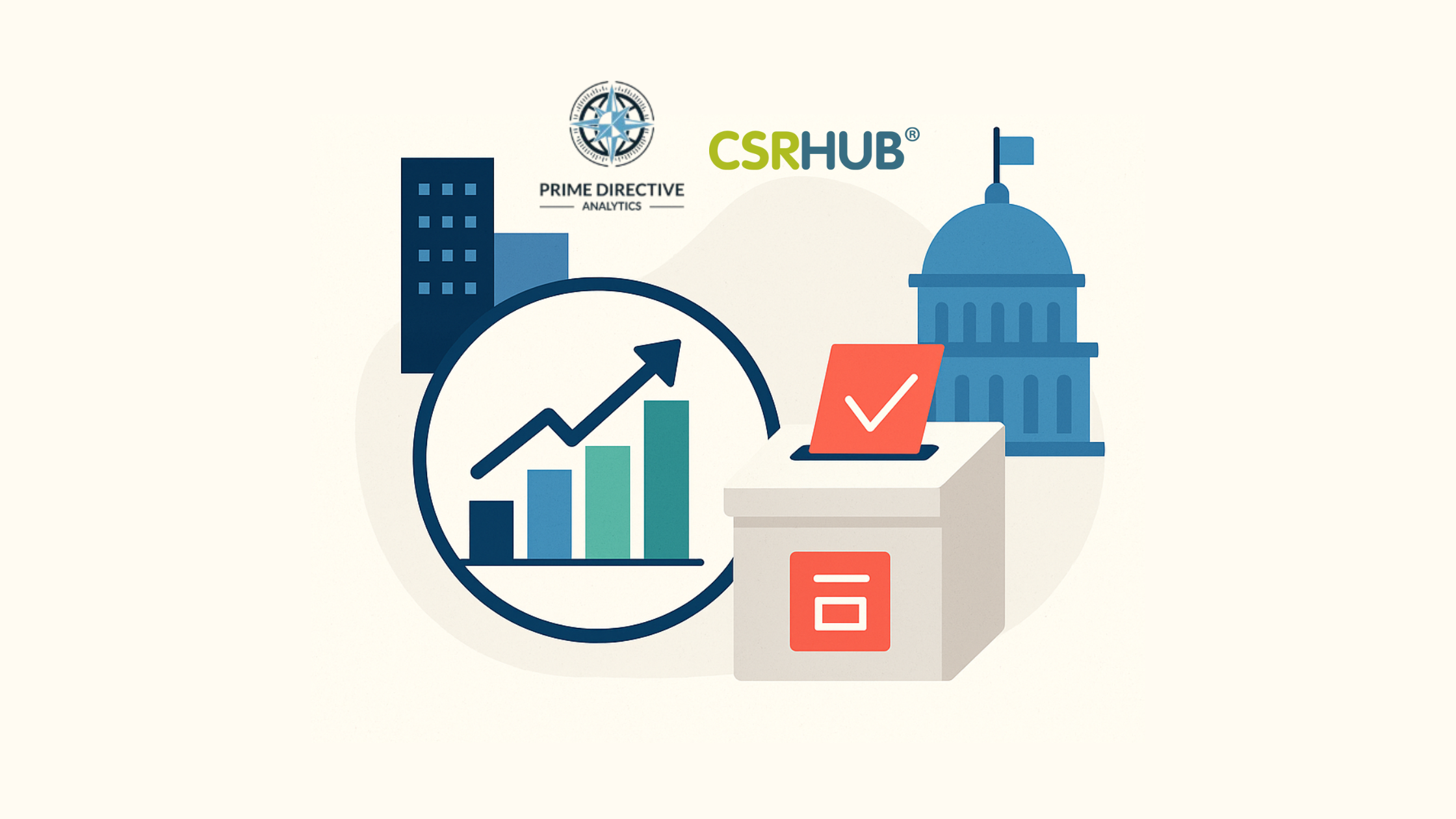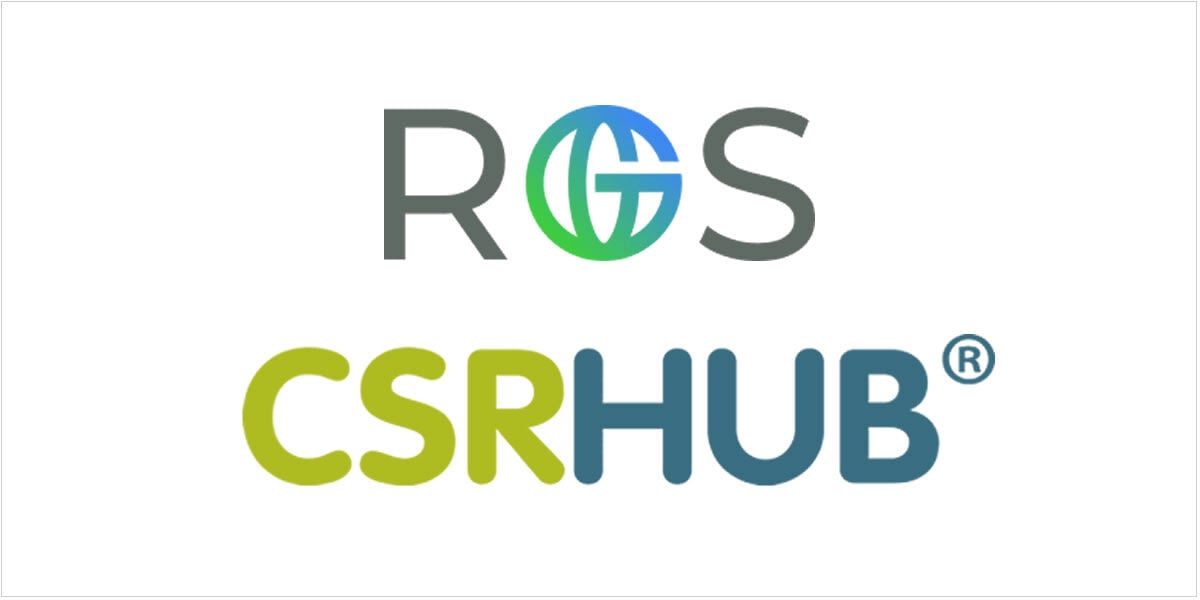By Bahar Gidwani
We recently compared the perceived CSR performance of 630 corporations who have committed to the Global Reporting Initiative (GRI) reporting standard with the perceived CSR performance of more than 4,000 corporations who have not, based on scores from CSRHUB LLC’s corporate social responsibility (CSR) ratings system.
Not only did we find that GRI-committed companies have higher overall ratings in the CSRHUB system, but they also receive more attention from socially responsible investment (SRI) firms and receive more awards from NGOs and activist groups. Although it’s difficult to determine whether compliance actually causes better performance, GRI-conforming companies did score better overall (at a 53.7 average score), than those who released CSR reports (as reported by Corporate Register), but did not embrace the GRI standard. The latter group received an average score of 50.1. This suggests that outside observers may respect CSR reports that conform to the GRI standard.
The Study Universe
CSRHUB LLC’s ratings schema is an aggregation of corporate social responsibility (CSR) information from more than 100 data sources. As of December 31, 2010, the database contained ratings on 4,836 companies located in 65 countries and drawn from 135 industries.
In 2010, CSRHUB became an Organizational Stakeholder (OS) in the GRI, ingesting two lists of companies: those who announced their commitment to support the GRI reporting standard in 2009 and those who did so in 2010. GRI companies release information on their internal sustainability management principles and processes. GRI’s website provides details of its G3 reporting standard and CSRHUB has explained how G3 information maps to its own ratings.
514 of the 1,334 organizations on the 2009 GRI list and 630 of the 1,451 organizations on the 2010 list were also in the main CSRHUB database. The remaining companies on these lists were either private, government organizations, too small to be rated by CSRHUB’s sources, or were subsidiaries or divisions of companies. CSRHUB rates only parent organizations.
Compared to companies rated by CSRHUB, the geographic distribution of GRI-committed companies is biased strongly towards Europe and Asia. Finance, real estate and durable goods companies are over-represented in the GRI set, relative to CSRHUB’s company universe. Though we didn’t have access to information about the size or profitability of GRI companies, an informal review of the GRI list didn’t reveal any evidence of bias in these areas.
CSRHUB’s overall rating for a company is based on four category scores. When calculating a company’s overall score, the relative importance of these category and subcategory scores is adjusted based on the topical preferences of an individual CSRHUB user or group of users. Therefore, all overall scores must be expressed as based on the framework reference settings of a user or group of users.
For the purposes of this study, we used the average of the profiles of all CSRHUB users to determine company ratings. If this research were conducted from a different perspective, some or all of the rating-related results could be different.
Detailed Rating Differences
The ratings for GRI-reporting companies at CSRHUB’s subcategory reporting level were especially high in the Environment Policy & Reporting and Training Health & Safety sub-categories. They were lowest for Community Development & Philanthropy, Human Rights & Supply Chain, and Resource Management subcategories. This suggests that GRI-conforming companies collect and report environment-related and health and safety-related information more thoroughly than community, human rights and resource management information. The superior performance by GRI companies on all twelve subcategories suggests that they do not receive a “truth penalty” for fully reporting their performance.
Checking the Results
Companies that used the GRI standard in 2010 had an average overall rating of 53.8, compared to a rating of 48.3 for those that did not. Assuming that GRI companies were similar to CSRHUB’s overall data set, there is a 99.9% probability that this 5.5 point score difference is significant.
We considered whether the differences we described in geographic and industry distribution for GRI-conforming companies could have biased our results. According to our calculations, the geographic distribution could have created a 1.3 point increase in the average rating and the industry distribution could have created a 0.2 point decrease in the average rating. These are small differences relative to the overall effect and we do not believe they account for the five point gap in scores.
GRI reporting companies also appeared to receive more attention from Socially Responsible Investment (SRI) firms. In 2010 the average number of SRI sources reporting on a non-GRI reporting company was 5.2 sources. The average for GRI reporting companies was 7.1 sources (based on ten sources). Further, in 2010, those who were not GRI compliant received an average of 0.9 awards or favorable mentions. GRI companies received 3.4 awards. It should be noted that 57/100 companies on the well-respected AccountAbility 100 list produced GRI-standard reports in 2010.
Effect of Continued Participation
Of the 520 companies that used the GRI standard in 2009, 410 also used the standard in 2010. Companies who reportedly used GRI standards both years had an average overall rating of 54.9—higher than the overall 2010 GRI average. It is impossible to prove a causal relationship between use of the GRI standard and high perceived levels of corporate social responsibility performance with currently available data. However, if such a relationship exists, we can expect to see further improvement in the CSRHUB ratings of companies who continue to participate.
Bahar Gidwani is a Cofounder and CEO of CSRHUB. Formerly, he was the CEO of New York-based Index Stock Imagery, Inc, from 1991 through its sale in 2006. He has built and run large technology-based businesses and has experience building a multi-million visitor Web site. Bahar holds a CFA, was a partner at Kidder, Peabody & Co., and worked at McKinsey & Co. Bahar has consulted to both large companies such as Citibank, GE, and Acxiom and a number of smaller software and Web-based companies. He has an MBA (Baker Scholar) from Harvard Business School and a BS in Astronomy and Physics (magna cum laude) from Amherst College. Bahar races sailboats, plays competitive bridge, and is based in New York City.



